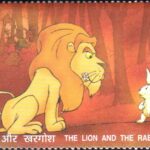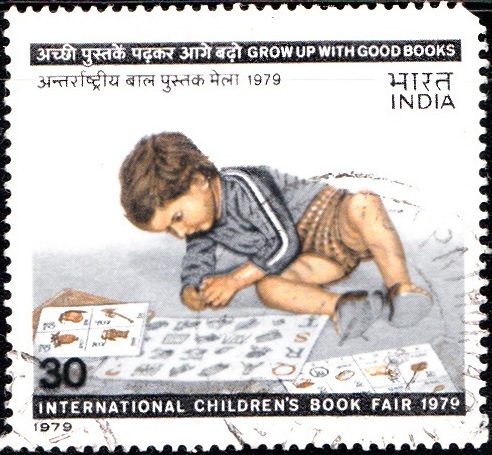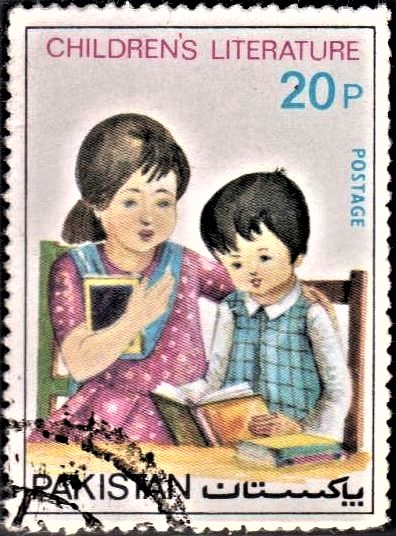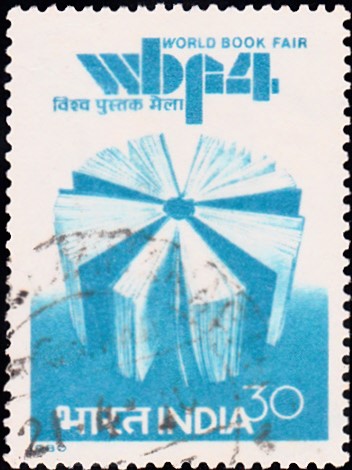
India on Children’s Day 1976
A commemorative postage stamp on the National Children’s Day 1976 :
 Issued by India
Issued by India
Issued on Nov 14, 1976
Issued for : The P and T Department pays its tribute to the Panchatantra by selecting a child’s painting based on one of the stories – of the loyal mongoose, killed in anger by a farmer’s wife, who is hasty in mistaking its blood-smeared appearance, without knowing that her pet has really saved her baby from a snake. The hurt look in the mongoose’s eyes and the shadow of repentance over the woman’s face in this painting speak much more than words can.
Design : The painting adopted for the design of the stamp was done by 10-year-old Kum. Hansa D. Bhatia. The painting was received as entry in a competition organised by Guest Keen & Williams Ltd., and have been provided by Smt. Hara Gupta.
Type : Stamp, Mint Condition
Colour : Multi Colour
Denomination : 25 Paise
Overall size : 3.34 x 2.88 cms.
Printing size : 2.987 x 2.524 cms.
Perforation : 13 x 13
Number per issue sheet : 35
About :
- Children’s Day is celebrated throughout the country on 14th November every year. The theme selected for this year’s Children’s Day stamp is Children’s Literature.
- It is said that children grow up with good books. The turn of the century saw the advent of children’s literature in most of the Indian languages. It is now a well-developed and popular aspect of book publishing in India. From ‘once–upon–a–time’ tales and ‘long–long–ago’ stories, children’s literature has graduated to adventure stories and science-fiction, in tune with the times. However, the classics, mythology, and legends have stood the test of time as representing our rich heritage and tradition. Naturally, they provide a veritable storehouse for writers in search of stories with a ‘message’.
- The Panchatantra, for instance, continues to fascinate writers and readers alike. The stories tell us in a lucid and engaging style the various facets of human nature and existence. Hence their universal appeal. They are ascribed to a Brahmin, Vishnusharman, who had three princes as his ward to be taught ‘the wise conduct of life’. The Panchatantra first appeared in Sanskrit, and its translations not only travelled far and wide, but assumed different forms in several countries, ultimately becoming the best collection of stories in the world.
- Text : K. Ramakrishnan, Children’s Book Trust.







